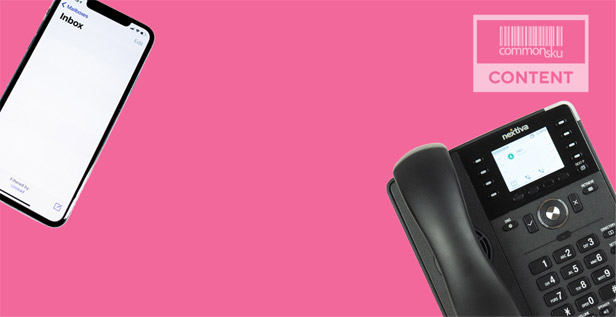Strategy May 10, 2021
13 Dos and Don’ts for Better Comms
Can we talk about how we talk?
After all, you live in a furiously-paced world. Each day is flooded with possibilities … and problems, which can make something as simple as communication … complicated.
In military speak, “comms” are the activities, equipment, techniques, and tactics used in some of the most challenging environments such as battlefields, on land, underwater, and also in air.
Though we’re not in battle, we are under a daily fusillade of rapid-fire challenges using all kinds of tools in the different ways we work. And we live in a helluva complex world of challenging environments: design complexity, product possibilities, production scheduling, problem resolution - most of which occurs in hyper-speed and in a virtual environment, furthering the confusion.
If your ops software is the engine, comms are the oil: everything moves swiftly if all the gears are in sync.
Pan out with me and look down at your organization for just a minute and you’ll see how complicated comms really is:
• One colleague is on the phone talking with a supplier about a difficult multi-color imprint job.
• Another is having a rapid-fire convo with a client about an in-hands date through DM’s on IG.
• Two colleagues are kicking back and forth a lost shipment problem in-app via the platform.
• Three team members are on a zoom call with a supplier.
• Four are on a google hangout kicking around ideas for their Q3 sales strategy.
• Slack is popping off with humorous moments, anecdotes, high-fives, and updates.
• Oh, and, all the while, your phone’s blowing up, beeping, buzzing, and shouting at you to pay attention to who-knows-what via text, Twitter, IG, Facebook, and TikTok.
On any given day, you’re moving between multiple tools and amid many projects, but through them all, you are primarily using two forms of communication: asynchronous and synchronous.
Synchronous communication means you are communicating with two or more people in real-time on the phone, or during a video conference call, or in person.
Asynchronous communication means you are talking with two or more people but it’s not occurring at the same time, such as over email or through a project management tool, or on a google doc, or through chat.
It sounds like semantics, but understanding the distinction between the two is crucial. An example: Some of us use Slack as a synchronous tool all the time, they keep it open, alerts set on every channel, and their day is bombarded with interruptions. Because of this constant context switching, they rarely get to focus on one project at a time and instead, bounce like a ping pong ball between tasks. They might prove to the world they’re responsive but at what cost to their output and their contribution?
And one big cost to this is that the work-from-home experiment has turned the majority of us into permanent work-from-anywhere fans, but work’s boundary lines have blurred which means communication lines have blurred as well. Many of us have trouble turning work off which means we aren’t using the full power of asynchronous communication (responding when it’s convenient to respond).
Communication is more complicated than ever, which is why it’s probably a good time to pause and reflect on how you communicate with your team and your clients. We thought we’d jump-start the convo for you and your colleagues by providing a suggested list of ideas, consider them 13 Do’s and Don’ts for better comms:
1. DO keep all projects/order convos in-app, all the time. Make sure your team keeps all project and order communication in-app, doing so creates bread crumbs for everyone and centers your communication around the project, keeping the information open and accessible by all.
2. DO reply immediately with clients. Be fast to reply, even if it’s a no-answer reply. Often, you won’t have an immediate answer, but you want your clients to rest assured that you’ve received the message and are in full control! The hotter the fire, the faster the “I’m-on-it” response should be. What’s your response time with customers? I once had a colleague who led our shops team and she would often brag about her response time with clients, “30 seconds!” she would proudly say. Customers loved her and loved us for being so responsive.
3. DO make client comms easy and everywhere: Do you have instant chat enabled on your website? How about your shops? Can customers reply right on a proof or on a proposal?
4. DO clarify which tools should be used for what. Often, I’ll be on a zoom meeting with a team member and they’ll say, “I just sent you the info,” which almost always causes the receiver to ask: Where did you send it? Through zoom chat? Slack? Email? Establish a ground rule: if you’re in a synchronous meeting, share files through the platform you’re synchronizing ;-) on.
5. DO reduce the number of channels you and your teams use. Do you really need Google Hangouts and Zoom? Are you causing unnecessary confusion? “I know I had that conversation with her about this project. Is it in my Gmail? Slack? Was it on a doc? Was in-app? Text? DM? Did we talk about it on a zoom call?” > Reduce this as much as possible.
To read more, click here.
Bobby Lehew is the chief content officer at commonsku, this article is courtesy of commonsku, the work-from-anywhere platform that powers your connected workflow enabling you to process more orders and dramatically grow your sales. To learn more visit commonsku.com.

